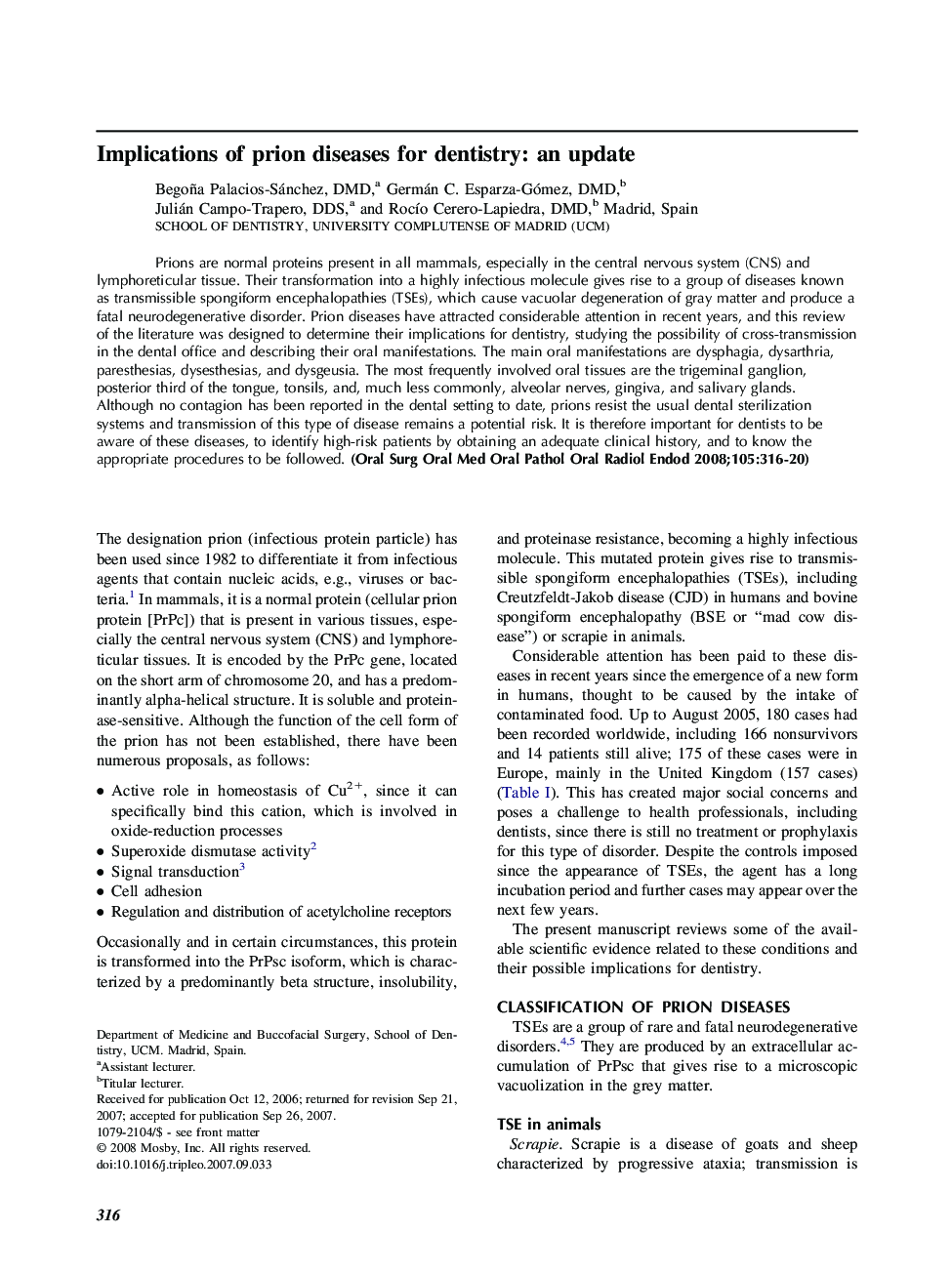| Article ID | Journal | Published Year | Pages | File Type |
|---|---|---|---|---|
| 3169028 | Oral Surgery, Oral Medicine, Oral Pathology, Oral Radiology, and Endodontology | 2008 | 5 Pages |
Prions are normal proteins present in all mammals, especially in the central nervous system (CNS) and lymphoreticular tissue. Their transformation into a highly infectious molecule gives rise to a group of diseases known as transmissible spongiform encephalopathies (TSEs), which cause vacuolar degeneration of gray matter and produce a fatal neurodegenerative disorder. Prion diseases have attracted considerable attention in recent years, and this review of the literature was designed to determine their implications for dentistry, studying the possibility of cross-transmission in the dental office and describing their oral manifestations. The main oral manifestations are dysphagia, dysarthria, paresthesias, dysesthesias, and dysgeusia. The most frequently involved oral tissues are the trigeminal ganglion, posterior third of the tongue, tonsils, and, much less commonly, alveolar nerves, gingiva, and salivary glands. Although no contagion has been reported in the dental setting to date, prions resist the usual dental sterilization systems and transmission of this type of disease remains a potential risk. It is therefore important for dentists to be aware of these diseases, to identify high-risk patients by obtaining an adequate clinical history, and to know the appropriate procedures to be followed.
